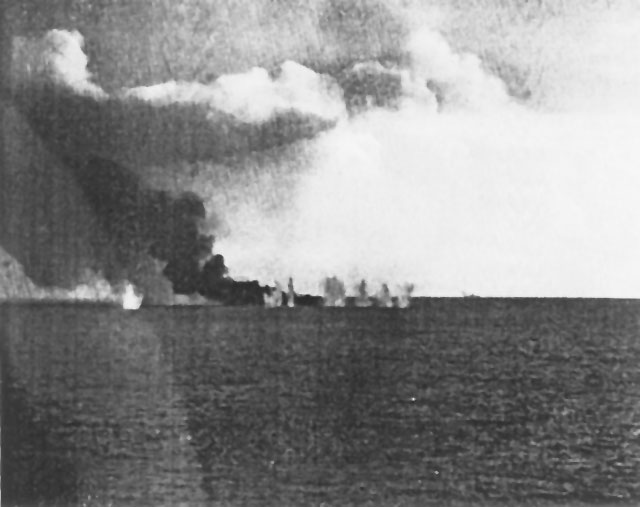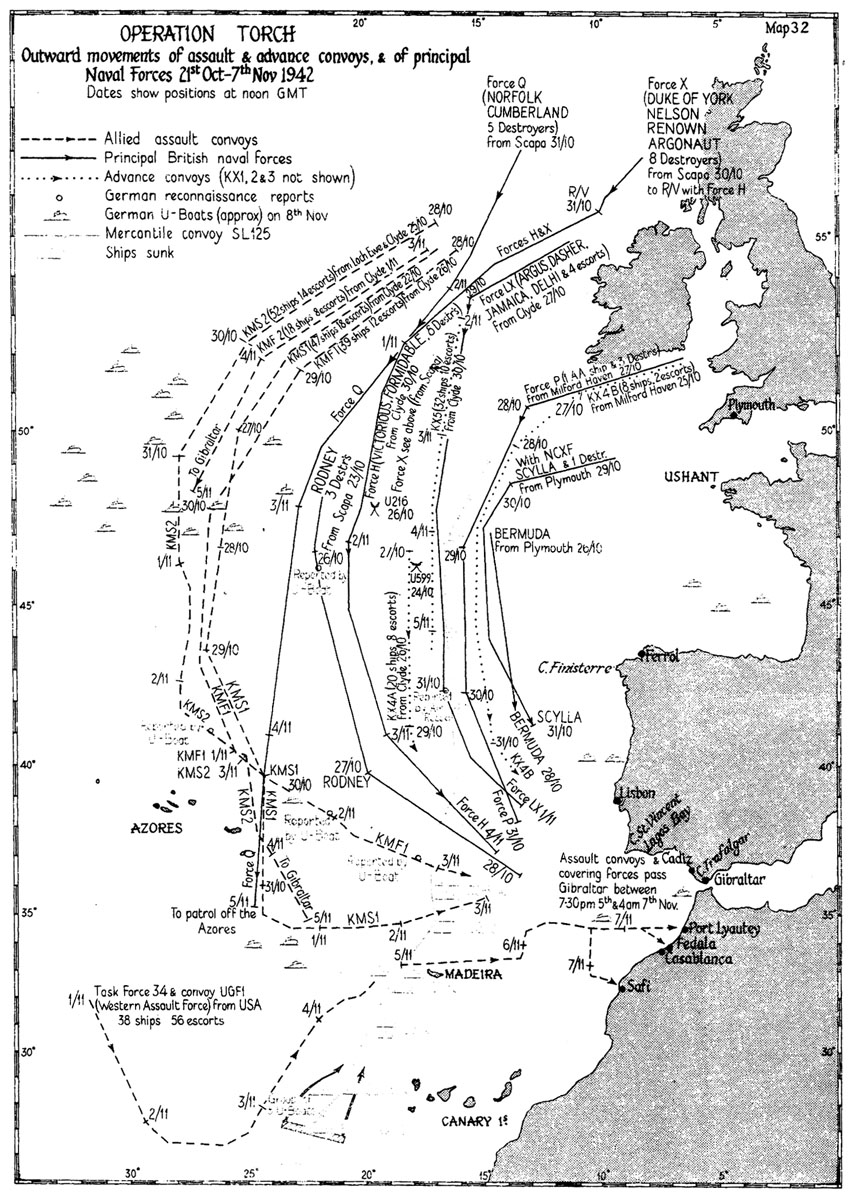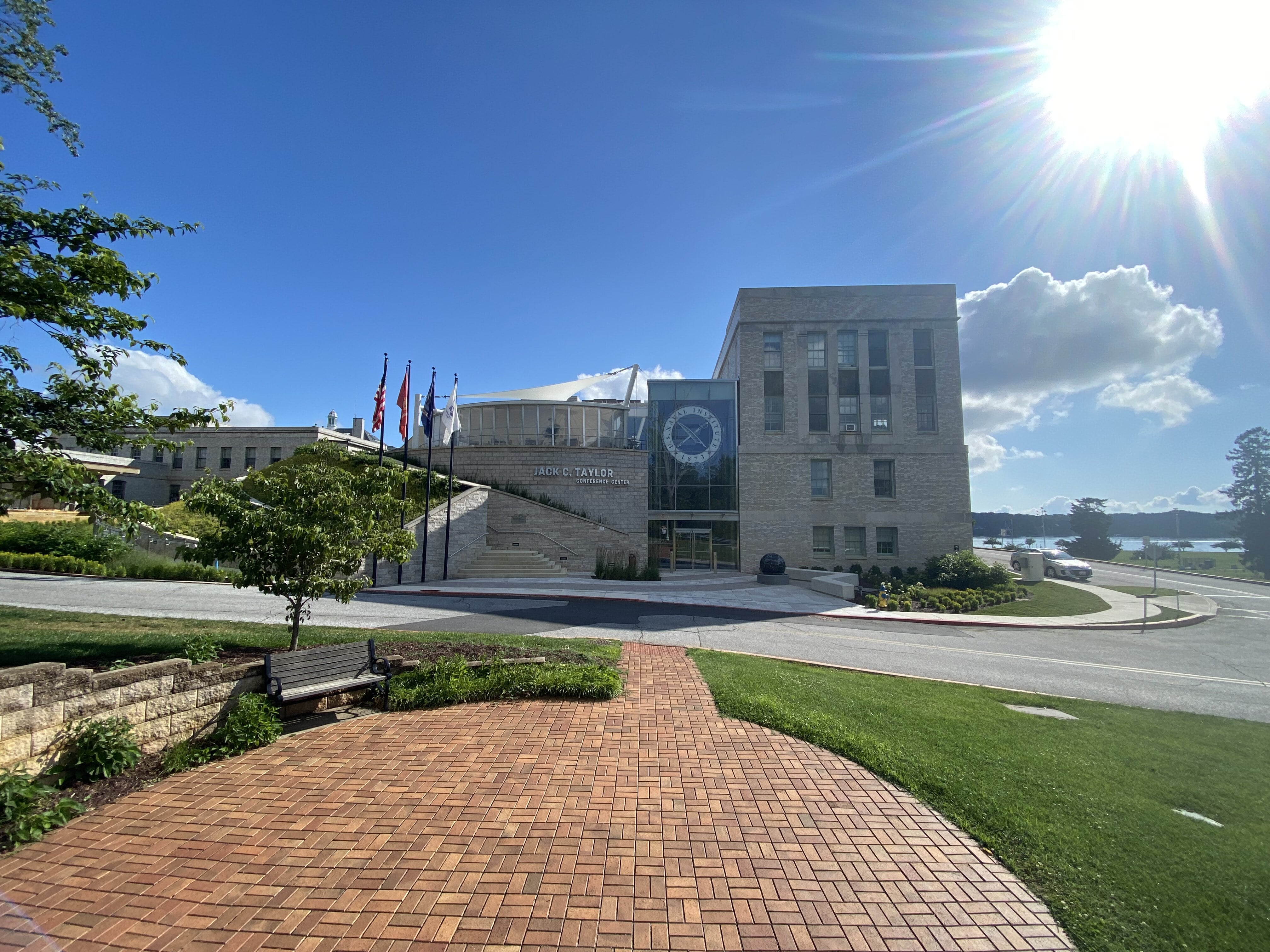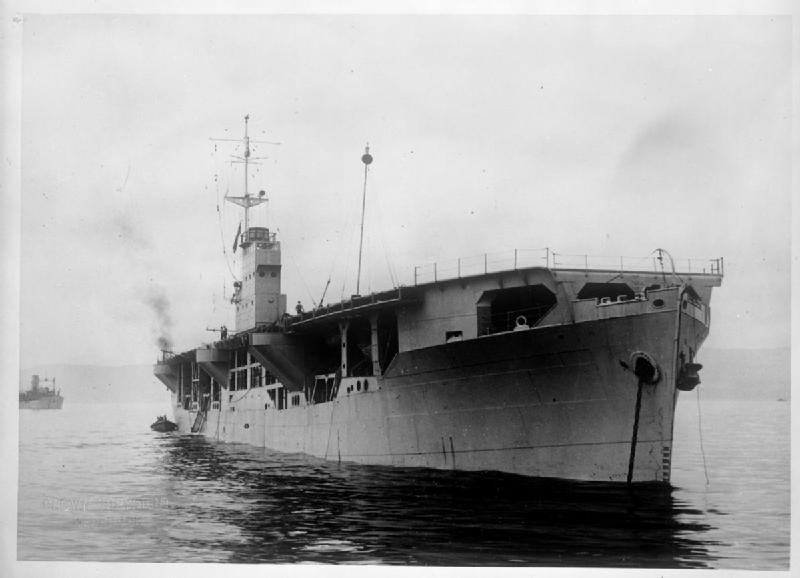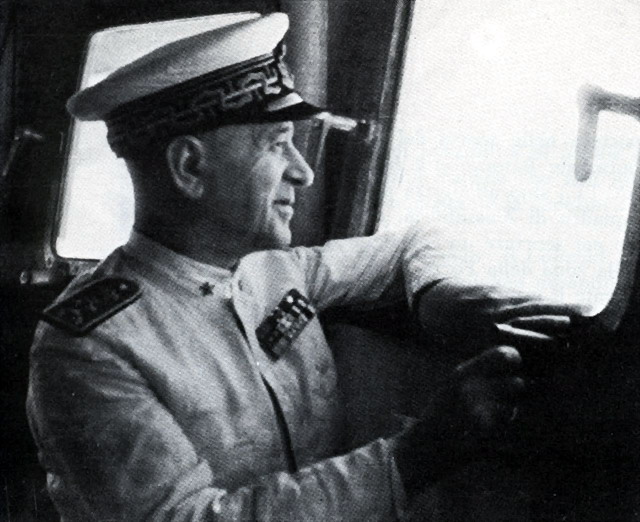|
Escort Carriers
The escort carrier or escort aircraft carrier (U.S. hull classification symbol CVE), also called a "jeep carrier" or "baby flattop" in the United States Navy (USN) or "Woolworth Carrier" by the Royal Navy, was a small and slow type of aircraft carrier used by the Royal Navy, the United States Navy, the Imperial Japanese Navy and Imperial Japanese Army Air Force in World War II. They were typically half the length and a third the displacement of larger fleet carriers, slower, more-lightly armed and armored, and carried fewer planes. Escort carriers were most often built upon a commercial ship hull, so they were cheaper and could be built quickly. This was their principal advantage as they could be completed in greater numbers as a stop-gap when fleet carriers were scarce. However, the lack of protection made escort carriers particularly vulnerable, and several were sunk with great loss of life. The light carrier (U.S. hull classification symbol CVL) was a similar concept to the e ... [...More Info...] [...Related Items...] OR: [Wikipedia] [Google] [Baidu] |
HMS Audacity (D10)
HMS ''Audacity'' was a British escort carrier of the Second World War and the first of her kind to serve in the Royal Navy. She was originally the German merchant ship ''Hannover'', which the British captured in the West Indies in March 1940 and renamed ''Sinbad'', then ''Empire Audacity''. She was converted and commissioned as HMS ''Empire Audacity'', then as HMS ''Audacity''. She was torpedoed and sunk by a German U-boat in late 1941. History ''Hannover'' ''Hannover'' was a 5,537 GRT cargo liner built by Bremer Vulkan Schiff- und Maschinenbau, Vegesack and launched on 29 March 1939. She was owned by Norddeutscher Lloyd and plied between Germany and the West Indies on the banana run. ''Hannover''s port of registry was Bremen. When World War II began, ''Hannover'' sought refuge in Curaçao, Netherlands Antilles. In March 1940, ''Hannover'' attempted to return to Germany as a blockade runner. She was sighted between Hispaniola and Puerto Rico on the night of 7/8 ... [...More Info...] [...Related Items...] OR: [Wikipedia] [Google] [Baidu] |
Battle Of Leyte Gulf
The Battle of Leyte Gulf ( fil, Labanan sa golpo ng Leyte, lit=Battle of Leyte gulf; ) was the largest naval battle of World War II and by some criteria the largest naval battle in history, with over 200,000 naval personnel involved. It was fought in waters near the Philippine islands of Leyte, Samar, and Luzon from 23 to 26 October 1944 between combined American and Australian forces and the Imperial Japanese Navy (IJN), as part of the invasion of Leyte, which aimed to isolate Japan from the countries that it had occupied in Southeast Asia, a vital source of industrial and oil supplies. By the time of the battle, Japan had fewer capital ships (aircraft carriers and battleships) left than the Allied forces had total aircraft carriers in the Pacific, which underscored the disparity in force strength at that point in the war. Regardless, the IJN mobilized nearly all of its remaining major naval vessels in an attempt to defeat the Allied invasion, but it was repulsed by the US Navy ... [...More Info...] [...Related Items...] OR: [Wikipedia] [Google] [Baidu] |
Operation Torch
Operation Torch (8 November 1942 – Run for Tunis, 16 November 1942) was an Allies of World War II, Allied invasion of French North Africa during the Second World War. Torch was a compromise operation that met the British objective of securing victory in North Africa while allowing American armed forces the opportunity to engage in the fight against Nazi Germany on a limited scale. It was the first mass involvement of US troops in the Mediterranean and Middle East theatre of World War II, European–North African Theatre, and saw the first major airborne assault carried out by the United States. While the French colonies were formally aligned with Germany via Vichy France, the loyalties of the population were mixed. Reports indicated that they might support the Allies. American General Dwight D. Eisenhower, supreme commander of the Allied forces in Mediterranean Theater of Operations, planned a three-pronged attack on Casablanca (Western), Oran (Center) and Algiers (Easter ... [...More Info...] [...Related Items...] OR: [Wikipedia] [Google] [Baidu] |
United States Naval Institute
The United States Naval Institute (USNI) is a private non-profit military association that offers independent, nonpartisan forums for debate of national security issues. In addition to publishing magazines and books, the Naval Institute holds several annual conferences. The Naval Institute is based in Annapolis, Maryland. Established in 1873, the Naval Institute claimed "almost 50,000 members" in 2020, mostly active and retired personnel of the United States Navy, Marine Corps, and Coast Guard. The organization also has members in over 90 countries. The organization has no official or funding ties to the United States Naval Academy or the U.S. Navy, though it is based on the grounds of the Naval Academy through permission granted by a 1936 Act of Congress. History The U.S. Naval Institute was formed on October 9, 1873 by fifteen naval officers gathered at the U.S. Naval Academy's Department of Physics and Chemistry building in Annapolis to discuss, among other topics, the impli ... [...More Info...] [...Related Items...] OR: [Wikipedia] [Google] [Baidu] |
Proceedings (magazine)
''Proceedings'' is a 96-page monthly magazine published by the United States Naval Institute. Launched in 1874, it is one of the oldest continuously published magazines in the United States. ''Proceedings'' covers topics concerning global security and includes articles from military professionals and civilian experts, historical essays, book reviews, full-color photography, and reader commentary. Roughly a third are written by active-duty personnel, a third by retired military, and a third by civilians. ''Proceedings'' also frequently carries feature articles by Secretaries of Defense, Secretaries of the Navy, Chairmen of the Joint Chiefs of Staff, and top leaders of the Navy, Marine Corps and Coast Guard. Notable contributors Over the decades many notable names have contributed articles to Proceedings either early in their careers or when they reached the upper echelons of leadership, and in many cases, both. * Tom Clancy, best-selling author of techno-thrillers such as The Hun ... [...More Info...] [...Related Items...] OR: [Wikipedia] [Google] [Baidu] |
William F
William is a male given name of Germanic origin.Hanks, Hardcastle and Hodges, ''Oxford Dictionary of First Names'', Oxford University Press, 2nd edition, , p. 276. It became very popular in the English language after the Norman conquest of England in 1066,All Things William"Meaning & Origin of the Name"/ref> and remained so throughout the Middle Ages and into the modern era. It is sometimes abbreviated "Wm." Shortened familiar versions in English include Will, Wills, Willy, Willie, Bill, and Billy. A common Irish form is Liam. Scottish diminutives include Wull, Willie or Wullie (as in Oor Wullie or the play ''Douglas''). Female forms are Willa, Willemina, Wilma and Wilhelmina. Etymology William is related to the given name ''Wilhelm'' (cf. Proto-Germanic ᚹᛁᛚᛃᚨᚺᛖᛚᛗᚨᛉ, ''*Wiljahelmaz'' > German ''Wilhelm'' and Old Norse ᚢᛁᛚᛋᛅᚼᛅᛚᛘᛅᛋ, ''Vilhjálmr''). By regular sound changes, the native, inherited English form of the name shoul ... [...More Info...] [...Related Items...] OR: [Wikipedia] [Google] [Baidu] |
Merchant Aircraft Carrier
A merchant aircraft carrier (also known as a MAC ship, the Admiralty's official 'short name') was a limited-purpose aircraft carrier operated under British and Dutch civilian registry during World War II. MAC ships were adapted by adding a flight deck to a bulk grain ship or oil tanker enabling it to operate anti-submarine aircraft in support of Allied convoys during the Battle of the Atlantic. Despite their quasi-military function, MAC ships retained their mercantile status, continued to carry cargo and operated under civilian command. MAC ships entered service from May 1943 when they began to supplement and supplant escort carriers, and remained operational until the end of the war in Europe. Development In 1940, Captain M. S. Slattery RN, Director of Air Material at the Admiralty, proposed a scheme for converting merchant ships into aircraft carriers as a follow-up to the CAM ship project. Slattery proposed fitting a flight deck equipped with two arrester wires and a safe ... [...More Info...] [...Related Items...] OR: [Wikipedia] [Google] [Baidu] |
Fighter Catapult Ship
Fighter catapult ships also known as Catapult Armed Ships were an attempt by the Royal Navy to provide air cover at sea. Five ships were acquired and commissioned as Naval vessels early in the Second World War, and these were used to accompany convoys. The concept was extended to merchant ships which were also equipped with rocket assisted launch systems and known as Catapult Aircraft Merchantmen ( CAM ships). Both classes could launch a disposable fighter (usually a Hawker Hurricane) to fight off a threat, with the pilot expected to be rescued after either ditching the aircraft or bailing out close to the launching ship. The ships There were five fighter catapult ships, collectively known as the ''Pegasus'' class. Two, ''Patia'' and ''Springbank'', were lost during the war. They were each equipped with a single Fairey Fulmar or "Hurricat" (an adapted Hawker Hurricane Mk.1A). See also * List of ships of the Second World War * List of aircraft carriers of the Second World War * ... [...More Info...] [...Related Items...] OR: [Wikipedia] [Google] [Baidu] |
Light Aircraft Carrier
A light aircraft carrier, or light fleet carrier, is an aircraft carrier that is smaller than the standard carriers of a navy. The precise definition of the type varies by country; light carriers typically have a complement of aircraft only one-half to two-thirds the size of a full-sized fleet carrier. A light carrier was similar in concept to an escort carrier in most respects, however light carriers were intended for higher speeds to be deployed alongside fleet carriers, while escort carriers usually defended convoys and provided air support during amphibious operations. History In World War II (WWII), the United States Navy produced a number of light carriers by converting cruiser hulls. These s, converted from light cruisers, were unsatisfactory ships for aviation with their narrow, short decks and slender, high- sheer hulls; in virtually all respects the escort carriers were superior aviation vessels. These issues were superseded by ''Independence''-class ships' virtue of b ... [...More Info...] [...Related Items...] OR: [Wikipedia] [Google] [Baidu] |
Attack On Pearl Harbor
The attack on Pearl HarborAlso known as the Battle of Pearl Harbor was a surprise military strike by the Imperial Japanese Navy Air Service upon the United States against the naval base at Pearl Harbor in Honolulu, Territory of Hawaii, just before 8:00a.m. (local time) on Sunday, December 7, 1941. The United States was a neutral country at the time; the attack led to its formal entry into World War II the next day. The Japanese military leadership referred to the attack as the Hawaii Operation and Operation AI, and as Operation Z during its planning. Japan intended the attack as a preventive action. Its aim was to prevent the United States Pacific Fleet from interfering with its planned military actions in Southeast Asia against overseas territories of the United Kingdom, the Netherlands, and those of the United States. Over the course of seven hours there were coordinated Japanese attacks on the US-held Philippines, Guam, and Wake Island and on the British Empire ... [...More Info...] [...Related Items...] OR: [Wikipedia] [Google] [Baidu] |
Battle Of Taranto
The Battle of Taranto took place on the night of 11–12 November 1940 during the Second World War between British naval forces, under Admiral Andrew Cunningham, and Italian naval forces, under Admiral Inigo Campioni. The Royal Navy launched the first all-aircraft ship-to-ship naval attack in history, employing 21 Fairey Swordfish biplane torpedo bombers from the aircraft carrier in the Mediterranean Sea. The attack struck the battle fleet of the ''Regia Marina'' at anchor in the harbour of Taranto, using aerial torpedoes despite the shallowness of the water. The success of this attack augured the ascendancy of naval aviation over the big guns of battleships. According to Admiral Cunningham, "Taranto, and the night of 11–12 November 1940, should be remembered forever as having shown once and for all that in the Fleet Air Arm the Navy has its most devastating weapon." Origins Since long before the First World War, the Italian ''Regia Marina''s First Squadron had been based ... [...More Info...] [...Related Items...] OR: [Wikipedia] [Google] [Baidu] |
